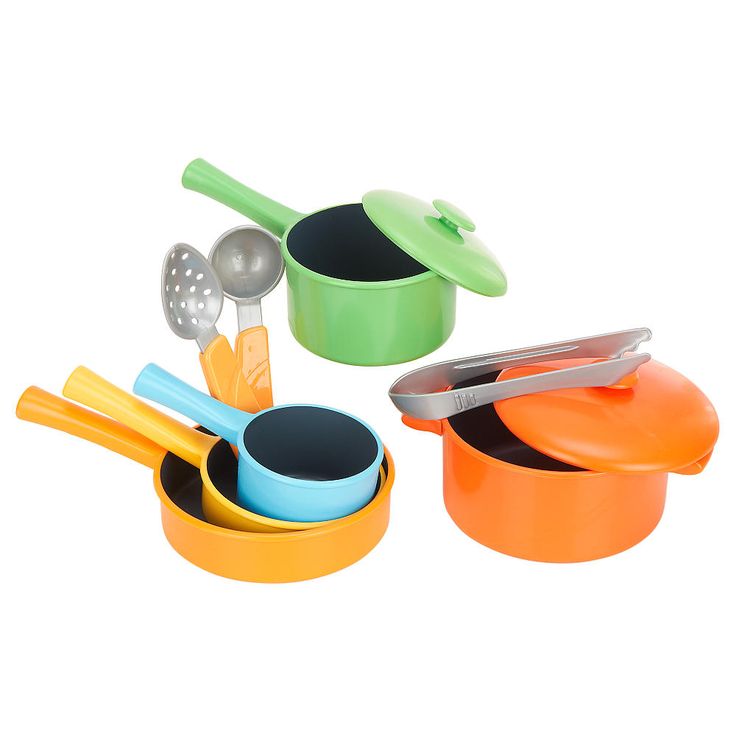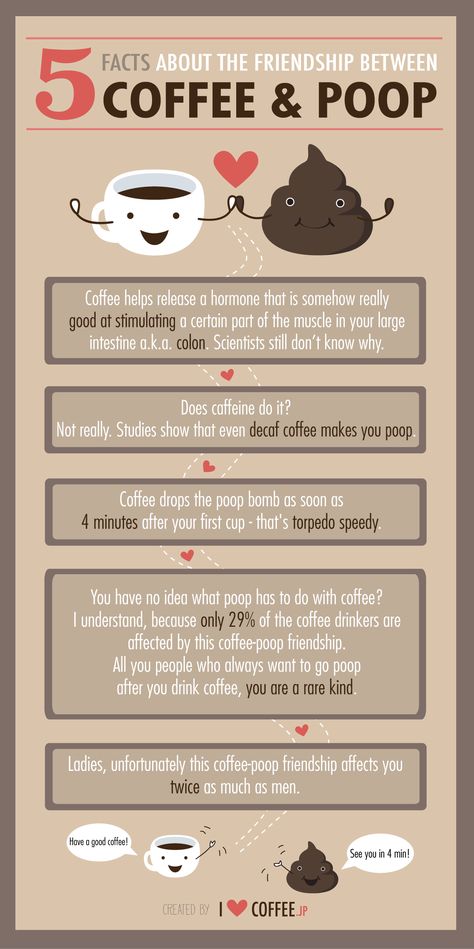Feeding baby before bed
Feeding Your Baby to Sleep - Is it a Good Idea?
Tags:
- Baby
- Newborn Sleep
- 3-6 Months Sleep
- 6-9 Months Sleep
- breastfeeding
- self-settling
This is one of those sleep topics that people often have a strong opinion on.....so we hope that you find our information on this topic helpful.
Our perspective is that if you are reading our sleep information, you are wanting to teach your baby to sleep through the night or at least reduce night-waking....so our tips are designed to achieve this objective!
Introduction
Feeding to sleep is one of the most common ways to get newborn babies to sleep. Tired babies will often fall asleep when feeding, as the combination of breast milk, cuddling with mum and sucking is very powerful. Plus, newborns can only cope with being awake for about an hour at a time, so if feeding takes a while, it becomes more and more likely baby will nod off while feeding.
With older babies, feeding to sleep can continue to be effective at getting your baby to fall asleep. However feeding to sleep quickly becomes a firm habit, as baby learns to fall asleep by feeding. Over time this means they will want to be fed back to sleep every time they wake in the night, which is on average 4-6 times for babies over 5 months.
Feeding your baby to sleep can be lovely for all ages; baby is snuggled in your arms, having a delicious cuddle, it's warm and comforting. It's great for bonding and lovely for both mum and baby.
'Feeding to sleep' in this article generally refers to breast-feeding to sleep but the information can equally be applied to babies who fall asleep while being bottle fed.
Should I feed my baby to sleep?
It's a very personal decision and you will know what is best for your baby. However, we encourage you to read the information below, so you understand the longer term impact of feeding your baby to sleep.
While it may seem like a quick and easy settling solution now, the majority of longer term night-waking that we deal with is caused by an entrenched habit of either feeding or rocking to sleep.
It's best to be well informed about feeding to sleep and make a decision about whether this is what you want to do, rather than feeling like you have to do it or it's the only option.
Feeding babies under 5 months to sleep
When babies are newborn, how they fall asleep often doesn't have too much impact on their sleep. You may be feeding to sleep and your baby is sleeping through the night, or having good day sleeps. This is because newborns drift in and out of sleep cycles, and haven't yet learned habits of how they get to sleep.
One impact of feeding a newborn to sleep can be catnapping. This is particularly true if you feed a baby to sleep, then transfer them to their bassinet. They may sense you are not there when they wake or miss the sound of your heart-beat, and will wake up shortly after being put down.
Plus you may also feel that you are feeding all the time or stuck to the sofa, as if you move your baby will wake up!
One option is to change your routine, so you use Feed, Play, Sleep. This means you feed your baby when she wakes, rather than right before she needs to sleep. Your baby will feed better as she is hungry and alert, rather than snacking and falling asleep.
There is no need to do a 'top up' feed before your baby gets into bed. If you observe tired signs, pop your baby into bed and use settling techniques such as white noise and swaddling to get her to sleep.
Be aware that baby sleep changes significantly at about 4-5 months. A baby who is fed to sleep and has been sleeping all night will likely start waking again after 4-5 months. If the feeding to sleep continues, many babies go back to waking 4-6 times or more every night, wanting the powerful breast milk/sucking/cuddle combo to get back to sleep.
The sooner you start to teach your baby to fall asleep without feeding, the easier it is likely to be!
Weaning newborns off being fed to sleep
-
For babies under 4 months, start by reviewing The Happiest Baby techniques of Swaddling, White Noise and Side/Stomach position etc.
 Often using these settling techniques will make enough difference that you can change with relative ease.
Often using these settling techniques will make enough difference that you can change with relative ease. -
Use the feed/play/sleep routine during the day, so you are settling baby when she is tired....and feeding baby when she wakes up.
Feeding babies over 5 months to sleep - continued night waking
If you are happy with frequent night waking, then of course it is fine to feed your baby to sleep. But if you are wanting to encourage your baby to sleep through the night and be able to settle without your help, then weaning your baby off being fed to sleep is essential.
This is because all babies over 5 months wake FULLY between sleep cycles (usually 4-6 times a night minimum) and to 'sleep through the night' they need to be able to resettle themselves after each sleep cycle. If they are feeding to sleep at bedtime, they will likely expect to be fed back to sleep at each night-waking too.
For babies over the age of 5 months, feeding to sleep is one of the most common reasons that babies wake in the night./imgs/2018/04/24/14/2233277/c06de098ab479f2bb2fb7e3a0d9a9d2c90c777f4.jpg) This is true for babies who were sleeping through and start waking again, and is the reason why many babies have never slept through.
This is true for babies who were sleeping through and start waking again, and is the reason why many babies have never slept through.
Generally, the longer a baby has been fed to sleep, the more often a baby will wake in the night...rather than less.
As we have said, if you are OK with this...no problem at all. But if you are becoming exhausted from repeatedly getting up to your infant and having to feed her back to sleep during the night, changing your bedtime settling technique will have a significant impact on baby's night-time sleep.
Read our information on sleep assosiations for more on this
Only mum will do
Another reason that many mums become frustrated with feeding to sleep is that it means only they can settle baby at bedtime. This can mean you feel tied to home and you can never go out in the evening. It can mean limited options for baby-sitting, especially if further feeding is required if baby wakes an hour or two later.
By teaching your baby another settling technique you may be able to enjoy the odd evening out with your partner or even a night away!
And it is great when Dad can settle baby to sleep at bedtime and during the night. It's great for his confidence with your baby and nice to spread the work-load of baby around a bit!!
Relying on feeding to sleep can put extra pressure on you as a breast-feeding mum...and we know it is the reason why many mums give up breastfeeding altogether. Once your baby is no longer fed to sleep, you may find you actually enjoy breastfeeding more as you may feel you regain a sense of control.
How to decide when to wean your baby off feeding to sleep
Regardless of the age of your baby, you can wean your baby off being fed to sleep relatively quickly and easily - when you are ready to do it!
Feeding to sleep becomes a very strong habit, for both mum and baby, and dad can rely on it pretty heavily too! So absolute commitment from both parents to teaching baby a new settling technique is essential if you are going to be successful.
While you have an end goal of teaching your baby to self settle, it's worth noting that this doesn't mean using 'cry it out'.....there are lots of options for teaching babies to settle without feeding to sleep. Choose one that you as a family are comfortable with. Different techniques work for different families, depending on the age of the baby, how quickly you need it to work, what you are prepared to try etc.
Also remember your consistency and commitment to your sleep plan will be the main thing which determines if your baby learns to settle without feeding to sleep, so only start when YOU are ready.
Recognise that teaching your baby a new settling technique takes days or weeks...do not expect your baby to like the change immediately or instantly sleep through the night after one day!
But you should start to see improvements after 4-5 days if you are being consistent with always using the new technique and not confusing your baby by feeding her back to sleep in the night.
Read our detailed article on teaching your baby to self settle
Should I feed baby to sleep at night?
Babies over 4-5 months generally do not need any feeds in the night if they are having a dreamfeed at about 10pm. Doing a feed with your baby ASLEEP means you fill her tummy without her knowing, and you go to bed knowing she is not hungry in the night. Alternatively you could feed for the first wake after 9pm.
If you are not sure if your baby can last without any additional feeds, you won't know till you try it! It is worth trying to settle your baby without a feed and see if she can go back to sleep with a some additional warm bedding (often babies wake COLD rather than hungry), cuddle, patting, dummy or another settling technique. Generally we offer a feed as the first option, rather than try some other things first and see if she will go back to sleep.
You can also check with your Plunket nurse if she is happy with your baby's weight gain. ..i.e. if your baby is not putting on enough weight, then you will need to continue with at least one night feed.
..i.e. if your baby is not putting on enough weight, then you will need to continue with at least one night feed.
However you will find that the quicker you drop all feeds other than a Dreamfeed, the quicker your baby will sleep independently through the night. Babies often do not drop night feeds without some gentle encouragement from mum!
The quicker you drop all feeds other than a dreamfeed, the quicker your baby will sleep independently through the night.
How to gently stop feeding your baby to sleep
-
Babies over 5 months generally do really well with a structured routine for daytime and bedtime, such as day sleeps at 9am, 1pm, 4.30pm and bedtime at 7pm. This also means you will feed your baby when she wakes during the day, rather than before sleep times.
-
Introduce some additional positive sleep associations and allow several days for your baby to become attached to them before you start teaching self settling.
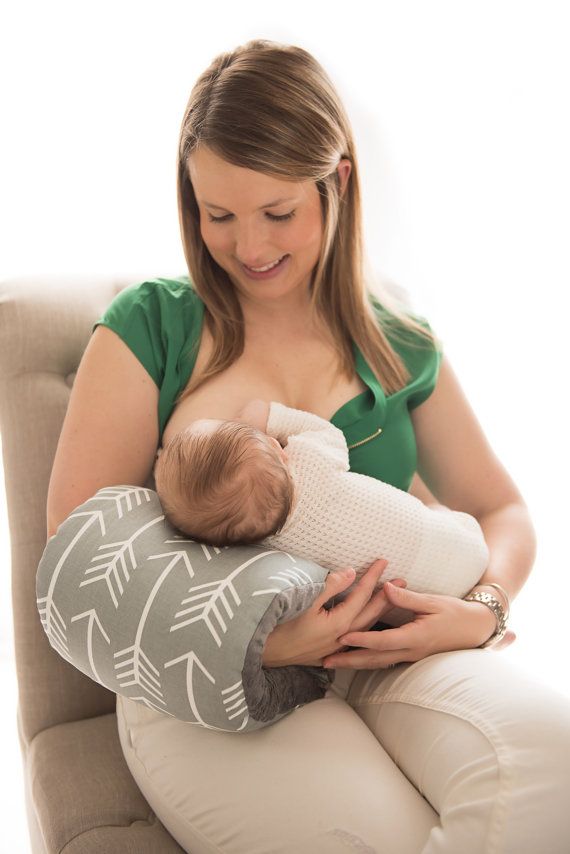 For example, start putting your baby into a sleeping bag before you feed her, give her a comforter to cuddle (for babies over 6 months of age) while you feed her and play white noise during the feed as she falls asleep...These associations are going to replace YOU as her main sleep association (i.e. what she needs to fall asleep).
For example, start putting your baby into a sleeping bag before you feed her, give her a comforter to cuddle (for babies over 6 months of age) while you feed her and play white noise during the feed as she falls asleep...These associations are going to replace YOU as her main sleep association (i.e. what she needs to fall asleep). -
Using a Safe T Sleep can give your baby a lovely feeling of pressure around her tummy, the same way your hand can or being cuddled. This is worth looking at as another tool in this weaning process.
-
Aim for 10 minutes of awake time between finishing your 6.30pm feed and when baby goes into bed. This can be cuddles, stories, a walk round the house, massage etc. You may want to gradually work up to 10 minutes if you currently feed baby until she is asleep. E.g. tonight aim for 30 seconds between feed and baby into bed, tomorrow night aim for a minute etc.
-
Your first step is to teach your baby she can actually fall asleep in bed, rather than on YOU - this is the most significant aspect of the weaning process.

-
So if you currently feed baby until she is asleep, change to only feeding baby until she is drowsy. Then put her into bed and then pat/sssh/put firm pressure on her tummy etc until she falls asleep IN BED.
-
Once your baby can fall asleep in bed OK, change to feeding until calm and use your patting to get baby get drowsy in bed.
-
Then you can work on increasing the awake time between the end of the feed and when you put your baby into bed awake.
-
Finally you will need to gradually reduce the amount of patting you do to help your baby get drowsy or fall asleep.
-
CONSISTENCY - Make sure you do the same for any night-waking! So if you are up to putting baby into bed drowsy but awake at bedtime, then do the same during the night.
-
If you have a really sucky baby, consider using a dummy for bedtime and during the night settling. Once babies are over about 5 months they can learn to put a dummy back in for themselves, which means you don't need to feed them back to sleep!
-
The No Cry Sleep Solution is a great resource if you want a very slow and gentle approach to weaning off feeding to sleep.
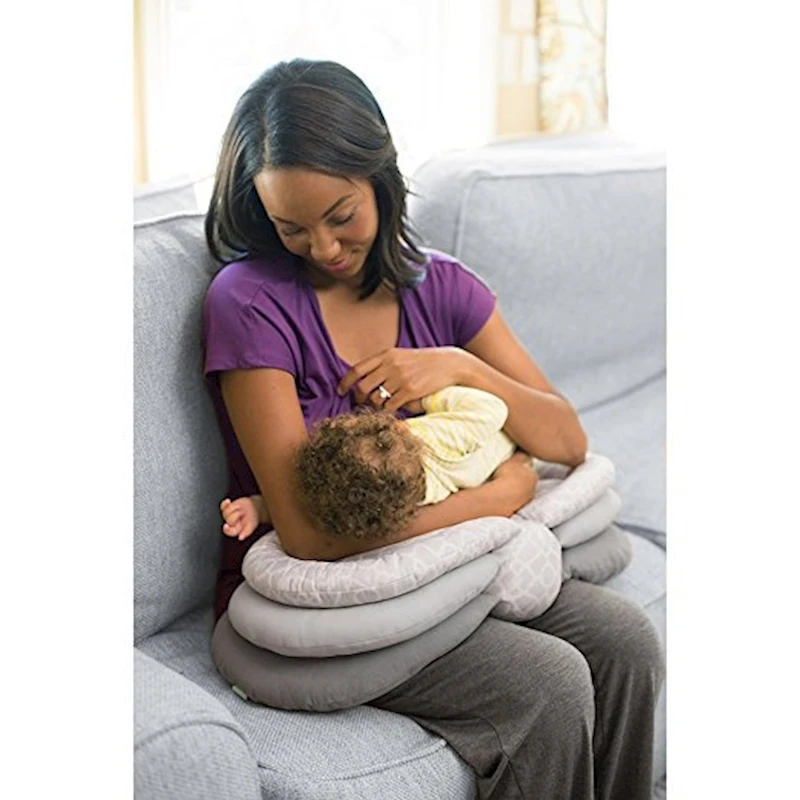 The technique involves the 'Pantley Pull-off' where you un-latch your baby and gently close her mouth, repeatedly....as she learns she can get to sleep without sucking. It is a very involved process but will work if you are consistent and patient with it.
The technique involves the 'Pantley Pull-off' where you un-latch your baby and gently close her mouth, repeatedly....as she learns she can get to sleep without sucking. It is a very involved process but will work if you are consistent and patient with it.
It won't be as hard as you expect!!!
At this point you should reassure yourself that you can teach your baby to fall asleep without feeding, and it will not be nearly as hard as you imagine it will be.
This is absolutely the message we get from many mums every week - just decide on a plan and you will soon have a baby who loves to cuddle and feed, but doesn't rely on it to get to sleep at bedtime and through the night.
We Recommend These
MCGRAW HILL
Sold out
View Product
WOOLBABE
Sold out
View Product
Sold out
View Product
If you are suffering post-natal depression or are shattered.
 ..
.. Over 50% of post-natal depression can be resolved in a few days when the baby learns to sleep through the night, i.e. the link between maternal sleep deprivation and depression is very strong.
So if you are depressed or just feeling at the end of your tether, you might want to consider a faster approach to weaning them off being fed to sleep - there are no prizes for being a martyr, particularly if your own health and well-being is at stake!!
The verbal reassurance method will generally teach a baby to sleep independently in 3-4 nights - see our facebook discussion page for feedback from other mums on this technique or see the Sleepeasy Solution DVD.
Recommended Articles
Teaching your baby to self settle
Everyone talks about self settling...but why is it important? Why should you bother to teach your baby to settle himself at bedtime? Why not just continue feeding or rocking your baby to sleep?
Read MoreSleep Associations and Self Settling
Teaching your baby to self settle at bedtime can be one of the biggest challenges you will face with your baby's sleep. It is an essential step in your baby learning to sleep through the night.
It is an essential step in your baby learning to sleep through the night.
Introducing and using a comforter
A small blanket or soft toy specifically designed to be used for settling babies and providing comfort.
Read MoreFeeding Baby to Sleep | Baby Sleep Advice | The Sleep Store
Mother breastfeeding baby to sleep in a baby carrier
Tags:
- Baby
- Newborn Sleep
- 3-6 Months Sleep
- 6-9 Months Sleep
- breastfeeding
- self-settling
BACK TO SLEEP ADVICE
Is it really so bad to nurse a baby to sleep?
There’s nothing more peaceful than having your baby doze off during her nighttime feeding—so why do experts discourage breastfeeding your baby to sleep?
For many moms, nursing a baby to sleep is a peaceful, relaxing habit that comes naturally to both them and their babies. Unfortunately, it’s likely not the best way to set your baby up for a restful night’s sleep.
Unfortunately, it’s likely not the best way to set your baby up for a restful night’s sleep.
“Babies arouse two to six times in the night as a result of normal healthy sleep rhythms,” explains Pamela Mitelman, a Montreal-based clinical psychologist who specializes in paediatric sleep. But they don’t necessarily fully wake up every time. The difference between a slight arousal or a full-blown wakeup? Sometimes it’s if they’re dependent on something to get them back to sleep. It could be rocking, a pacifier or nursing—whatever it is, if it isn’t there, they’ll wake up looking for it. So, if your baby develops a need to nurse to fall asleep, they could potentially fully wake up needing you at every little arousal—basically every 90 to 120 minutes in the night.
In the early days, it’s virtually impossible for your newborn not to doze off while nursing because his circadian rhythm hasn’t been established and breastmilk is a natural sleep inducer.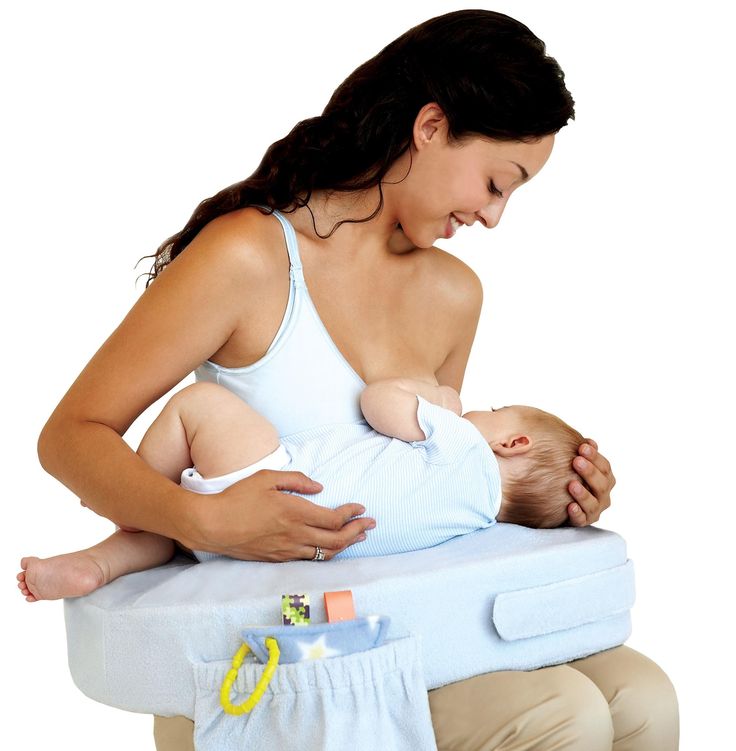 So if your baby is less than two months old, try not to worry that much when you see his eyes close mid-feed. That said, you can instil good sleep habits from the get-go by trying to put your baby down while he’s tired but not asleep, even just once in a while, to get him used to the idea of falling asleep without nursing. “After a few months, we encourage moms to try to keep the baby awake during feeds,” says Janey Reilly, CEO and founder of WeeSleep. This might mean tickling his feet, or nursing in a brightly lit, noisy area to help him avoid the temptation to drift off.
So if your baby is less than two months old, try not to worry that much when you see his eyes close mid-feed. That said, you can instil good sleep habits from the get-go by trying to put your baby down while he’s tired but not asleep, even just once in a while, to get him used to the idea of falling asleep without nursing. “After a few months, we encourage moms to try to keep the baby awake during feeds,” says Janey Reilly, CEO and founder of WeeSleep. This might mean tickling his feet, or nursing in a brightly lit, noisy area to help him avoid the temptation to drift off.
It’s not that you can’t nurse your baby at bedtime, but try not to do it as the last part of the routine, says Mitelman. “The best way to put an infant to sleep is in a drowsy but awake state,” she says. For example, you could try nursing your baby without letting him fall asleep, then put him in a sleeper, turn off the lights and place him in the crib. “If a six-month-old or even a four-month-old is being nursed, has a cat nap, opens his eyes, then mom puts him into bed, he is not as primed for sleep,” says Mitelman. (If your baby still needs a feed in the night, the wakeup should be at a consistent time every night, and he should be able to feed and then get back to sleep without much fuss.)
(If your baby still needs a feed in the night, the wakeup should be at a consistent time every night, and he should be able to feed and then get back to sleep without much fuss.)
During the day, starting at about four months, Reilly suggests feeding your baby when he wakes up from a nap, rather than when he’s going down, which has the added benefit of giving your baby a full, hearty feed, rather than having him doze off and not getting all the milk he needs.
While there’s nothing inherently wrong with nursing your baby to sleep, if you want your baby to sleep through the night so you can too, you’ll likely have to change that nighttime feed. Whether he’s four months old, six months old, or even a year old, the most effective way to break the habit is to not make nursing the last step before sleep, and make sure that when he does nurse, he stays awake for the full feed. Mitelman recommends breaking the nursing-to-sleep habit at bedtime first. “It’s the easiest time because they are most primed for sleep.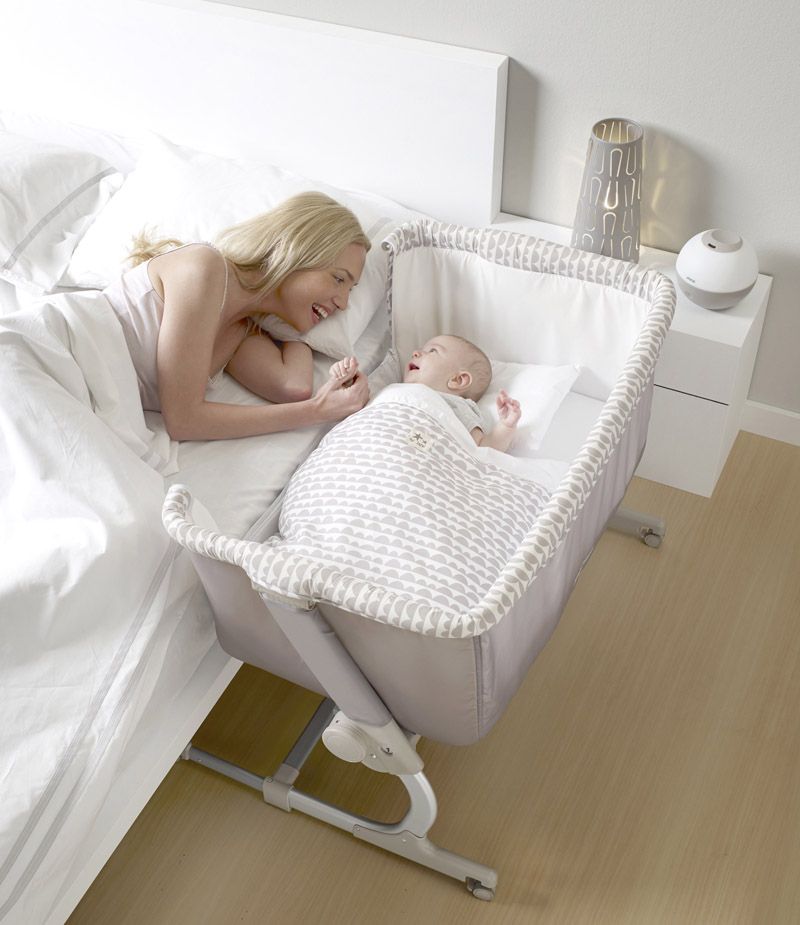 ”
”
Keep in mind, your baby will not likely take to the new routine without some protest, and the older they are, the stronger their protest is going to be. “A one-year-old who has had a whole year of being nursed to sleep will protest a lot harder than a younger child,” says Mitelman. She adds that wakeups for a one-year-old tend to be more prolonged than for a younger baby, too. “Oftentimes, what happens is they’re nursed to sleep, they wake in the night, the mother tries to nurse them back to sleep, but now their child may be up for one to two hours. It seems like they need to be nursed to sleep, but it’s really a habit that has been formed and, as the infant develops, it will no longer be an effective means of attaining healthy sleep.”
Stay consistent, say the experts, and know that you can break the habit. “The reality is everything is fixable when it comes to sleep,” says Reilly. It may help to keep your mind on the end goal, says Mitelman. “The habit needs to end if you want your baby to sleep through the night. ”
”
Watch Baby Grow!
Subscribe to Today’s Parent’s baby newsletter and find out what to expect for every stage and milestone, from birth to two years.- Email*
- Baby's due/birth date*
Month223456789101112
Day12345678910111213141516171819202122232425262728293031
Year2024202320222021
- CAPTCHA
- Consent*
Yes, I would like to receive Today's Parent's Baby newsletter. I understand I can unsubscribe at any time.**
FILED UNDER: Baby care baby sleep Breastfeeding nursing routine service seo
Baby sleep schedule | Budgetary healthcare institution of the Omsk region "Regional Children's Clinical Hospital"
After returning from the maternity hospital, the child builds a sleep, wakefulness and feeding regimen himself.
How to help a child adjust to the lifestyle of adults and teach him not to confuse day and night? Elena Baibarina, chief neonatologist of the Ministry of Health of Russia, tells.
The mode will set itself…
During the first weeks after birth, it is quite difficult to change the baby's day and night mode. During this period, the child focuses on his feeling of hunger, and not on the time of day.
Pediatricians recommend feeding baby as requested by . In the first weeks of life, a newborn wakes up and asks for a breast every one and a half to two hours.
This is perfectly normal, because his digestive system is not yet developed and digests mother's milk in small portions.
... and then the parents
From the maternity hospital - home
Elena Baibarina, chief neonatologist of the Ministry of Health of Russia, talks about how the first days of a newborn at home should go.
After a few weeks, the baby can already suck out more milk at a time, which means that he stays full longer. The interval between feedings is increased to 2.5-3 hours .
The interval between feedings is increased to 2.5-3 hours .
These changes in routine give mom more free time. First of all, it should be used for recreation. After all, even taking into account night feedings and caring for a child, a woman should sleep at least six hours a day.
Rest will help to avoid overwork and related problems: poor mood, depression, reduced milk production.
Good night!
At a few weeks old, a baby can already be "explained" the difference between day and night. Before you put your baby to sleep at night, follow a certain ritual .
Choose the time at which you will put the child to bed, based on the habits of the family. If you go to bed late, calculate the time so that the baby sleeps until the first nightly feeding on his own, and then falls asleep with the whole family.
Bathe your baby before bed. If the child is too excited from bathing, it is better to move it to an earlier time. Then the baby will have time to calm down, eat and fall asleep soundly.
Then the baby will have time to calm down, eat and fall asleep soundly.
Talk to your baby, sing him a lullaby or play soothing music. Maybe the child will fall asleep better next to a musical toy that plays a melody and glows dimly for several minutes.
Let dad wait
Usually dad comes home from work by the time of bathing. Despite the fact that the young father misses the baby a lot, do not let him talk noisily, actively disturb the child and play with him.
Dad can help you with bathing and calmly talk with the baby. The child will be pleased to hear his native voice, but he will not be overexcited.
Noisy games are best left until the weekend. At the same time, dad, yearning for parenthood, will provide mom with a couple of free hours.
Night is not the time to play
When it's time to feed or change a diaper in the middle of the night, do not turn on bright lights, try to move smoothly, and talk quietly.
After feeding the baby and changing the diaper, immediately put the baby in bed, not allowing him to wake up completely.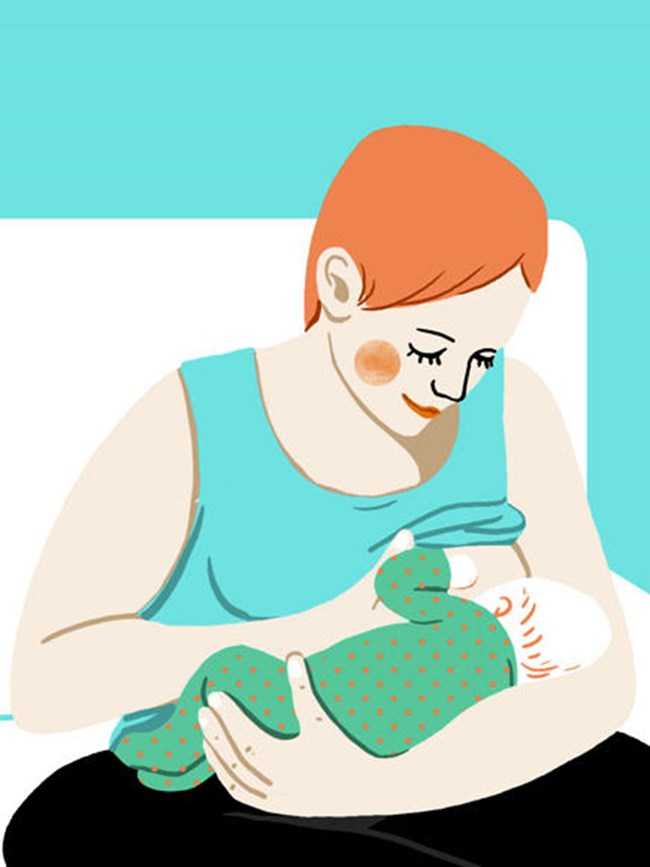
Good morning!
Be sure to open the curtains in the morning to let in daylight. Encourage your baby to play, turn on soft but energetic music.
The first transport
Even the first journey in life - from the maternity hospital home - the baby must make in a car seat. Learn how to choose and use the correct child restraint.
Take your baby with you to the kitchen or another room. He should hear the usual household sounds: the sound of pouring water, a boiling kettle, the conversations of adults.
However, remember that the kitchen is a potentially dangerous place ! Never place your child where he can reach the stove, hot kettle, and food that is not intended for him.
Never eat or drink tea while holding a baby: one careless move and the baby will burn!
Daily activities
During the day baby will sleep after feeding. But, unlike at night, give him the opportunity to be active during the waking period. Play with him, massage and exercise, show toys and objects in the apartment.
Play with him, massage and exercise, show toys and objects in the apartment.
Arrange time for walking. Better in the afternoon after feeding - this provides about three hours of good sleep.
Baby usually sleeps better and longer during a walk. With a child who does not fall asleep very well, you can take a walk in the evening - before bathing and feeding.
The most important thing
During the first weeks after birth, the child independently sets the daily routine. Gradually, parents can accustom the baby to the routine of the life of the rest of the family.
According to the website http://www.takzdorovo.ru
Breastfeeding on demand
You can often hear from a nursing mother: "I feed on demand, my baby requires a breast every 3.5 hours." Or: “I have always fed on demand. In a year, we already had 1 feeding in the evening, and my child calmly refused to breastfeed. Before talking about the demand of the child, it is necessary to find out what modern women mean when they say - "I breastfeed.
"
Modern mothers consider breastfeeding essential for feeding their baby. Just for feeding. Breast milk is food, the mother supplies the baby with the nutrients necessary for growth and development. When a baby suckles at the breast, he eats. Breastfeeding makes sense only as a process of supplying proteins, fats, carbohydrates, vitamins and microelements.
During suckling, the baby receives the nutrients it needs with mother's milk. This is the absolute truth. There is another unconditional truth, which is not given any importance in modern society, it is not taken into account and is not considered. Breastfeeding for a child is communication with the mother. We need to figure out how the child understands feeding on demand? Can he understand anything at all? Is there any difference for him how he is fed, for 15-20 minutes after 3.5 hours or in some other way?
What is on-demand feeding
On-demand feeding of a newborn baby means putting it on the breast for every squeak or search.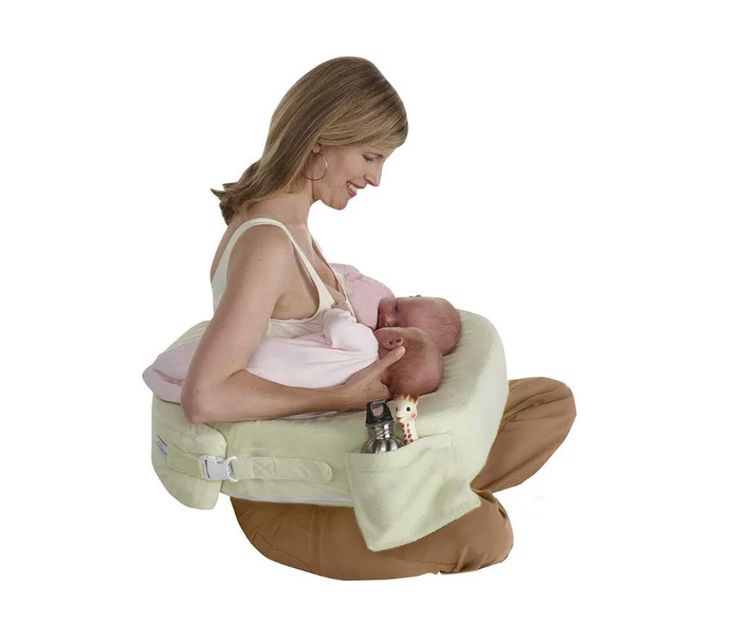 Squeak and search movements in newborns, even as early as the second or third day of life, begin to appear much more often than after 3.5 or 2.5 hours. The need for attachments increases rapidly, and by the 10-12th day of life, the need to attach to a child may occur 15-16 or more times a day. Applications vary in duration. The baby can fall asleep and sleep while sucking for, for example, 1.5-2 hours. Can release the breast after 1-2 minutes. And then ask her again. Why does a child need such frequent contact with his mother's breast?
Squeak and search movements in newborns, even as early as the second or third day of life, begin to appear much more often than after 3.5 or 2.5 hours. The need for attachments increases rapidly, and by the 10-12th day of life, the need to attach to a child may occur 15-16 or more times a day. Applications vary in duration. The baby can fall asleep and sleep while sucking for, for example, 1.5-2 hours. Can release the breast after 1-2 minutes. And then ask her again. Why does a child need such frequent contact with his mother's breast?
That's why. Being in the mother's belly, in a calm, familiar environment, listening to the noises of the mother's body, being in a warm, cramped, confined space, the baby sucked his fist, fingers, loops of the umbilical cord, swallowed amniotic fluid. Learned to suck and swallow. After birth, experiencing discomfort for any, the most insignificant reason, the baby tries to get rid of it. You can get rid of discomfort by getting into the usual conditions of a comfortable stay. The only place where the baby after birth can feel the sensations familiar to him is in the arms of the mother. The only familiar action is sucking. The only familiar taste and smell is the taste and smell of milk and lube in the areola. Milk and lubricant have an odor and taste similar to the taste and smell of amniotic fluid. Therefore, experiencing discomfort, the baby squeaks, or begins to look for an object to suck with his mouth. Ideally, it is immediately applied to the chest. The baby becomes warm, cramped, he hears the beating of his mother's heart, breathing, grumbling in the intestines, he sucks and feels the familiar taste and smell. If such an action happens constantly, the baby gains confidence, no matter what happens, he will solve all his problems with his mother. The place of comfort is now under the breast, and you can suck on the breast.
The only place where the baby after birth can feel the sensations familiar to him is in the arms of the mother. The only familiar action is sucking. The only familiar taste and smell is the taste and smell of milk and lube in the areola. Milk and lubricant have an odor and taste similar to the taste and smell of amniotic fluid. Therefore, experiencing discomfort, the baby squeaks, or begins to look for an object to suck with his mouth. Ideally, it is immediately applied to the chest. The baby becomes warm, cramped, he hears the beating of his mother's heart, breathing, grumbling in the intestines, he sucks and feels the familiar taste and smell. If such an action happens constantly, the baby gains confidence, no matter what happens, he will solve all his problems with his mother. The place of comfort is now under the breast, and you can suck on the breast.
This whole process is justified from a biological point of view. A newborn child does not feel the feeling of hunger, this feeling is not formed in him. It will begin to form at about two months of age. How to feed a creature that does not experience hunger ?! How to encourage him to take some action to get food? This can be done only at the expense of some other incentives. This stimulus for the newborn is constant bodily discomfort, thanks to which he wants to suckle all the time! The most intense, frequent and prolonged sucking in infants is observed in the first two or three months of life. It is in these first months that the main weight gain of the baby occurs.
It will begin to form at about two months of age. How to feed a creature that does not experience hunger ?! How to encourage him to take some action to get food? This can be done only at the expense of some other incentives. This stimulus for the newborn is constant bodily discomfort, thanks to which he wants to suckle all the time! The most intense, frequent and prolonged sucking in infants is observed in the first two or three months of life. It is in these first months that the main weight gain of the baby occurs.
Feeding in the first month
Baby falls asleep with the breast in his mouth, sleeps sucking for a while. Falling asleep deeply, lets go of the chest. After sleeping for a while, he wakes up, and is applied on waking. After sleep, he can stay awake for some time, for example, an hour and a half. During wakefulness, he may feel discomfort 2-3 times, for example, from a completely natural desire to pee, and having called his mother for help, having kissed for a couple of minutes, he will do his deeds. Then he will want to sleep, feel discomfort and, kissing his chest, will again fall asleep sucking. After some time, he will wake up and attach again. Then again a little "walk". And after some time, he will fall asleep at the chest again.
Then he will want to sleep, feel discomfort and, kissing his chest, will again fall asleep sucking. After some time, he will wake up and attach again. Then again a little "walk". And after some time, he will fall asleep at the chest again.
The daytime naps of a one-month-old baby feeding on demand vary in duration and number. There can be 4-6 dreams during the day, and they can last from 5-15 minutes to 2-2.5 sometimes 3 hours. "Around" each dream, the baby is applied to the chest, and applied between dreams several times. At night, the child falls asleep at the breast. Usually in the early morning hours, he begins to fuss and apply. In the morning, he almost never fully wakes up. The baby sleeps, from time to time, sucking on his mother's breast. Waking up in the morning, the baby is again applied to the chest. If you count all the attachments that have happened in a baby of one month of age, then approximately 16-20 attachments are obtained. This is how a newborn human cub behaves if it is given the opportunity to behave in accordance with physiological and psychological needs, which, by the way, are genetically determined. The child of the first months of life does not separate his personality from the personality of the mother and from her breast. Mom and her breasts, and everything connected with them, are the universe of the baby and himself.
The child of the first months of life does not separate his personality from the personality of the mother and from her breast. Mom and her breasts, and everything connected with them, are the universe of the baby and himself.
In most cases, a modern woman, being afraid to “accustom a child to hands”, strives to limit his requests for sucking. A pacifier and a bottle of tea or water come to her aid in this matter. They, too, can be sucked ... The need for sucking seems to be satisfied. But only the need for communication with the mother during suckling is not satisfied, the peculiar chain of mutual assistance and cooperation between mother and baby is destroyed, the formation of maternal affection and concentration is disrupted. Is the difference in the two actions noticeable to the reader: the baby cried, the mother took him, put him to her chest and started rocking him, or gave him a pacifier and started rocking the stroller, even with the words “Why are you crying, my sun?”
The modern woman who gives a pacifier and pumps a stroller is not a bad person who deliberately harms an infant. She is simply in captivity of prejudices regarding the relationship between mother and baby. She does not know how to behave correctly, does not know what to do in accordance with the natural needs of the child. If you tell her what the child really needs, she will exclaim in horror: “What is it, don’t let him get away with?!” Indeed, the child of the first months of life must not be let off the hook. For a woman who does not know how to comfortably carry a baby, and who does not know how to feed him in various positions (sitting, lying, standing and even moving), this can be very difficult. Especially if she is not sure of the correctness of her actions.
She is simply in captivity of prejudices regarding the relationship between mother and baby. She does not know how to behave correctly, does not know what to do in accordance with the natural needs of the child. If you tell her what the child really needs, she will exclaim in horror: “What is it, don’t let him get away with?!” Indeed, the child of the first months of life must not be let off the hook. For a woman who does not know how to comfortably carry a baby, and who does not know how to feed him in various positions (sitting, lying, standing and even moving), this can be very difficult. Especially if she is not sure of the correctness of her actions.
An action that should become automatic for the mother of a newborn: when the baby cries or shows other signs of anxiety, put the baby to the breast.
What's next?
The baby is growing. A fairly stable rhythm of daytime sleep begins to form in him, and a 3-4-month-old baby behaves quite differently from a newborn. Feeding on demand at this age looks something like this...
Feeding on demand at this age looks something like this...
- At three months, the baby has 10-12 feeds during the day and 2-4 at night. There are frequent applications for a short time, but their number is reduced. There may be a long night break in feedings, about 5 hours, but this is very rare. Much more often the night break is 2.5-3.5 hours. By this age, the baby's body is noticeably rounded.
- At four months, the baby begins to breastfeed noticeably less frequently. The main feedings are associated with sleep: the baby suckles before bedtime, during awakening and during sleep, both daytime and nighttime. In this regard, he has a fairly accurate feeding regimen. And many babies stop breastfeeding when they wake up after daytime sleep, sometimes as early as 2.5-3 months.
- At five months, the baby has 8-10 daytime feedings and 2-3 nighttime feedings, as well as in the fourth month of life, they are organized around dreams - the baby eats when he goes to bed and some babies suckle when they wake up.

- Feeding regimen changes at six months. The most active sucking shifts to the last 2-3 hours before waking up from a night's sleep. The period of daytime wakefulness can be divided into two periods: in the morning, when the baby sucked during the night is rarely applied to the breast, and in the evening, when attachments become very frequent. In total, there can be 7-10 day applications and 3-4 night applications. At this age, the baby begins a period of acquaintance with new food - pedagogical complementary foods. Sometimes there are attachments associated with the introduction of complementary foods, the baby “washes down” samples of new food with mother's milk. But many children do not want to drink complementary foods. When complementary foods are introduced to an on-demand baby, it is never meant to replace feedings with complementary foods. This is practically impossible, because the main feedings of the baby are associated with sleep, and mother's breakfasts, lunches and dinners, during which the baby gets acquainted with new food, are located between the baby's dreams, during his wakefulness.

- At seven months, the application frequency is about the same.
- At eight months, the feeding regimen changes. Since the baby shows high motor activity and is very busy exploring the surrounding space, in the daytime he forgets to breastfeed. In this regard, the number of daily feedings can be reduced to 6-8 times. The baby compensates for the reduction in daytime feedings by increasing the frequency and duration of nighttime feedings up to 6 times.
- In the second half of the year, babies who stopped breastfeeding when waking up after daytime naps again recall this habit. The baby’s daytime sleep in the second half of life, as well as in the region of a year and older, looks something like this: the baby falls asleep sucking, sleeps quietly for a while, for example 1-1.5 hours, then starts tossing and turning, fiddling, worrying, at this moment the mother lies down next to , gives him a breast and the baby can fill up 10-15-30 minutes sucking. Mom may well use this time for her own rest - lie down, read, while the baby sleeps while sucking.
 I know my mother, a lover of embroidery, who used this time specifically for embroidery ...
I know my mother, a lover of embroidery, who used this time specifically for embroidery ... - Breastfeeding becomes more frequent at nine to ten months. In the daytime, this is 4-6 full feedings and about the same number of attachments for various reasons. The baby has new reasons for attachment. If, during active actions to explore the world, the baby stuffs a bump or gets scared, he calms down with his mother's breast. There may be situations when you can comfort the baby by sitting next to him and hugging him. At night, 4-6 feedings remain, the baby begins to suckle more actively in the morning between 3 and 8 hours.
- At eleven months, a baby can already have 2-3 complete complementary foods. Initiation to adult food in the mind of a child is not associated with breastfeeding: attachment to the mother's breast is something other than the desire to get enough of the product they like. As a rule, after the baby has eaten, he feels the need to attach himself to the breast.
 The number of daily feedings remains the same in the child, but the number of short-term attachments increases. There are active mid-morning feedings between 4 and 8 o'clock in the morning.
The number of daily feedings remains the same in the child, but the number of short-term attachments increases. There are active mid-morning feedings between 4 and 8 o'clock in the morning. - At ten or twelve months, the baby, if he is already walking, can sometimes breastfeed every time he comes to his mother, i.e. about every 15-30 minutes. Attachments around dreams and night sucking persist. Therefore, if a mother says that a child suckles once or twice a day, this means that there is no feeding at the request of the child. There are restrictions imposed by the mother, with which the baby has come to terms. He treats breast sucking like food, sucks on a pacifier or a finger to fall asleep or soothe, or falls asleep just like that, without calming down.
- At twelve months, the baby is applied in about the same way.
- At the age of one and a half years, there may already be one daytime nap, so there are fewer attachments associated with sleep. Preserved for morning sucking.
 The baby is very free with his mother's breasts. Sometimes it happens that he comes up to suck just for fun. For example, like this: he comes up, climbs on his knees, looks into his mother’s face, smiles, starts to swarm in his shirt, gets breasts, smiles at his breasts, sucks for 30 seconds and leaves.
The baby is very free with his mother's breasts. Sometimes it happens that he comes up to suck just for fun. For example, like this: he comes up, climbs on his knees, looks into his mother’s face, smiles, starts to swarm in his shirt, gets breasts, smiles at his breasts, sucks for 30 seconds and leaves.
As for the number of feedings per day when feeding a child on demand, their number is almost never less than 12. A newborn has 12 or more attachments, mostly they are all associated with dreams. And a child, say 1.5-2 years old, can also have about 12 attachments, only 3-4 are associated with sleep, and the rest are short-term attachments for various reasons. I suggest to all mothers reading this text - do not count the application, do not notice their duration. Breastfeed your baby as often as he asks, when you feel the need to.
Mothers who do not think about breastfeeding without looking at the clock may get the impression that when feeding on demand, the mother can do nothing but feed the baby. This is not true. After the birth of a baby, a mother begins another life, she is called life with a baby. That's all. The child is with the mother, not the mother with the child! Feel the difference! You need to be able to organize your life in a different way, in the first months, of course, the help of loved ones is very necessary. In the tradition of many peoples, it was customary for the first 40 days after childbirth to remove a woman from any housework and household chores, she was engaged only in a child. In some nations, objects that the mother of a newborn touched were considered “unclean”, therefore, they preferred to protect the mother from the rest of the household, allocating her a separate “corner” of the house, where no one bothered her and she did not interfere with anyone. Among the Slavs, such a restrictive custom was called a six-week. By 1.5-2 months, the rhythm of daytime dreams begins to form, and the baby has a kind of “regime”, the mother becomes more free.
This is not true. After the birth of a baby, a mother begins another life, she is called life with a baby. That's all. The child is with the mother, not the mother with the child! Feel the difference! You need to be able to organize your life in a different way, in the first months, of course, the help of loved ones is very necessary. In the tradition of many peoples, it was customary for the first 40 days after childbirth to remove a woman from any housework and household chores, she was engaged only in a child. In some nations, objects that the mother of a newborn touched were considered “unclean”, therefore, they preferred to protect the mother from the rest of the household, allocating her a separate “corner” of the house, where no one bothered her and she did not interfere with anyone. Among the Slavs, such a restrictive custom was called a six-week. By 1.5-2 months, the rhythm of daytime dreams begins to form, and the baby has a kind of “regime”, the mother becomes more free.
For a mother who can't imagine breastfeeding without looking at the clock, and who is sure that the “right” baby is the baby lying quietly in her crib all the time, feeding on demand will be a complete hassle.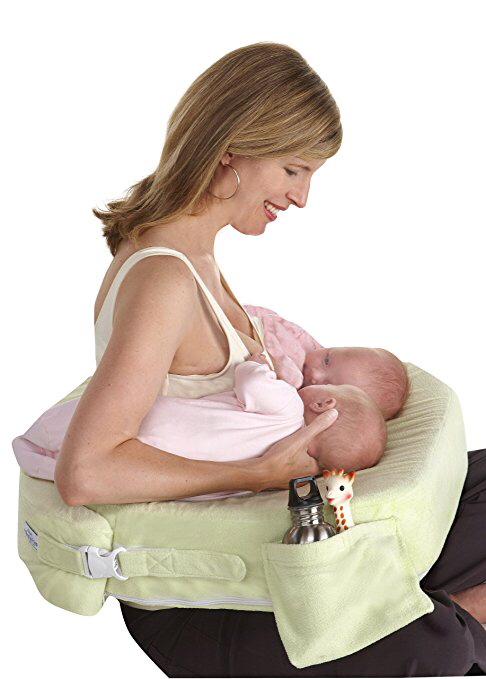 It will be much easier for such a mother if she stops looking at the clock and ties the baby to herself with a large scarf or uses a patchwork holder (sling). It will become easier for her if she stops running between the nursery and the kitchen, but takes the baby with her to the kitchen and carries him around the house with her, doing housework, in a box, a cradle, a special chair, if she tries not to put him off often, and pick up as soon as possible, postponing the baby only in case of emergency and not for long.
It will be much easier for such a mother if she stops looking at the clock and ties the baby to herself with a large scarf or uses a patchwork holder (sling). It will become easier for her if she stops running between the nursery and the kitchen, but takes the baby with her to the kitchen and carries him around the house with her, doing housework, in a box, a cradle, a special chair, if she tries not to put him off often, and pick up as soon as possible, postponing the baby only in case of emergency and not for long.
Breastfeeding is not the same as house arrest. In the conditions of modern society, it is possible to organize the exit of a nursing mother to work from about 6 months of age of the baby. If necessary, you can start working from the age of 4 months, but, of course, it is better not every day of the week and not full time. It is the responsibility of a breastfeeding consultant to help a mother organize her return to work.
Sometimes, when counseling mothers on breastfeeding, I suggest that they forget for a second that they are already living in the 21st century. I propose to return, for example, to the cave and ask what they will do if the child woke up at night, how to calm him down? If you are walking through the forest and trying not to attract the attention of predators, how to make the baby silent? If the child is thirsty, what will you give him? What is the baby used to, for thousands of years of its existence? To the fact that he sleeps on his mother while she wanders through the forest with a digging stick in search of roots, and wakes up when mother stops. Since mom stopped, then there is time to wake up and suck. Therefore, even now the child sleeps well, tied to the mother with a patchwork holder, wakes up when the mother, having done a few household chores, sits in a chair to take care of the baby.
I propose to return, for example, to the cave and ask what they will do if the child woke up at night, how to calm him down? If you are walking through the forest and trying not to attract the attention of predators, how to make the baby silent? If the child is thirsty, what will you give him? What is the baby used to, for thousands of years of its existence? To the fact that he sleeps on his mother while she wanders through the forest with a digging stick in search of roots, and wakes up when mother stops. Since mom stopped, then there is time to wake up and suck. Therefore, even now the child sleeps well, tied to the mother with a patchwork holder, wakes up when the mother, having done a few household chores, sits in a chair to take care of the baby.
Some mother, reading about the cave, will be offended, saying that she is a civilized creature. But please think. Man, mother's breast and mother's milk have been created by evolution over millions of years. They are made for each other. Baby food has created progress and more recently. The skills of motherhood and breastfeeding have also been lost by our society quite recently. A person is not physiologically adapted to artificial feeding and a pacifier. The mother's breast will not produce enough milk at 6-7 feedings per day. Nature did not know, when creating man as a mammal, that the time would come when the need for breastfeeding would be satisfied by some kind of pacifiers and nipples.
Baby food has created progress and more recently. The skills of motherhood and breastfeeding have also been lost by our society quite recently. A person is not physiologically adapted to artificial feeding and a pacifier. The mother's breast will not produce enough milk at 6-7 feedings per day. Nature did not know, when creating man as a mammal, that the time would come when the need for breastfeeding would be satisfied by some kind of pacifiers and nipples.
Changes that occur during the formation of the personality of a child who did not have full contact with the mother during prolonged breastfeeding are noted by modern research by psychologists and sociologists. These are changes with a minus sign. It would be better if they were not, these changes.
Breastfeeding is important not only for the baby, it is also important for the mother. During on-demand feeding, the woman's feelings change, a stronger attachment to the baby is formed, the woman becomes more sensitive to the needs of the baby.


